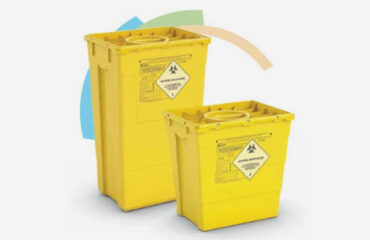Not known Facts About Reclaim Waste
Table of ContentsSome Known Incorrect Statements About Reclaim Waste The 5-Second Trick For Reclaim WasteReclaim Waste Can Be Fun For EveryoneTop Guidelines Of Reclaim WasteThe 6-Second Trick For Reclaim Waste
Domestic sewage waste refers to the waste and items from a residential septic tank. The correct management and disposal of domestic sewage waste need fluid waste to be moved to a sewer treatment plant where the correct techniques and tools are applied to detoxify and dispose of waste.
Industrial waste commonly consists of possible dangers, such as flammable materials or a combination of liquid and solid waste items, and requires an advanced and thorough disposal procedure. The disposal of business waste generally involves the filtration of waste before transport to ensure safe and correct disposal. Hazardous waste is produced from byproducts and drainage of commercial procedures and manufacturing.
This kind of waste can not use the very same sewage monitoring transportation or processes as septic or business liquids. The commercial waste management process calls for the assessment and testing of liquid waste before it goes through the disposal process (industrial wastewater treatment). Runoff waste is the liquid waste that originates from drainage and excess stormwater in very inhabited locations or cities
Overflow waste can trigger contamination and flooding otherwise dealt with properly. Discover more concerning sewage system cleaning and waste administration. Making sure appropriate waste administration can avoid catastrophes and reduce ecological damage. Both people in domestic settings and specialists in commercial or production sectors can take advantage of recognizing the procedures and regulations of fluid waste administration.
Reclaim Waste for Beginners
Call PROS Solutions today to learn more about our waste management and disposal services and the proper methods to care for the fluid waste you generate.
(https://www.awwwards.com/reclaimwaste1/)Do you understand what occurs to your water when you disengage, flush the bathroom or drain the cleaning device? No? Well, it deserves understanding. This so-called 'wastewater' is not only an important resource however, after treatment, will be released to our land, rivers or the ocean. Utilized water from toilets, showers, baths, kitchen area sinks, washings and commercial procedures is referred to as wastewater.

water used to cool equipment or tidy plant and equipment). Stormwater, a form of wastewater, is runoff that moves from farming and metropolitan areas such as roof coverings, parks, gardens, roadways, courses and seamless gutters right into stormwater drains pipes, after rain. Stormwater moves neglected straight to local creeks or rivers, ultimately getting to the ocean.
The Best Guide To Reclaim Waste
In Queensland, most wastewater is dealt with at sewer treatment plants. Wastewater is delivered from residential or commercial websites with a system of sewage systems and pump terminals, understood as sewage reticulation, to a sewage treatment plant.
The Division of Natural Resources recommends local governments about handling, operating and maintaining sewerage systems and treatment plants. In unsewered locations, city governments might need householders to mount specific or house sewage therapy systems to treat domestic wastewater from toilets, cooking areas, shower rooms and washings. The Division of Natural Resources authorises making use of home systems when they are confirmed to be reliable.
The majority of stormwater gets no therapy. In some new subdivisions, therapy of some stormwater to remove clutter, sand and crushed rock has started using gross toxin catches. Wastewater treatment occurs in 4 stages: Eliminates strong matter. Larger solids, such as plastics and other items wrongly discharged to sewage systems, are gotten rid of when wastewater is gone through screens.
Wastewater then streams right into large storage tanks where solids resolve and are removed as sludge. Grease and residue are skimmed from the surface area. Uses small living microorganisms referred to as micro-organisms to damage down and eliminate staying dissolved wastes and great bits. Micro-organisms and wastes are integrated in the sludge. Eliminates nitrogen and phosphorus nutrients that could cause algal blossoms in our waterways and threaten water life.
5 Simple Techniques For Reclaim Waste
Nutrient removal is not offered at all sewer therapy plants since it needs costly specialised tools. Clear fluid effluent created after treatment might still include disease-causing micro-organisms - liquid waste disposal.

Most wastewater moves right into the sewerage system. Under the Act, local governments provide approvals and licences for ecologically relevant activities (Ages) involving wastewater launches that may have a neighborhood effect.
A Biased View of Reclaim Waste
Tracking provides accurate details concerning water high quality and can validate that licence problems are being met. The info acquired through surveillance gives the basis for making water high quality choices.